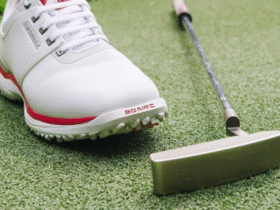In the academic community, you need to take on a lot of responsibilities and complete tasks within or by the deadline. Each of the tasks has its own set of standards that you need to comply with. One of the criteria is to have a thorough structure that compliments your work. Hence, following an effective Assignment Structure is the way to go in academic life.
Abstract With Table of Contents
The abstract, which typically takes up no more than one single-space page, provides a clear outline of the proposal. It must also cover the goal, methodology, and potential implications of the research. The table of contents makes it easy to find the necessary information in the text by outlining the parts.
Begin With An Effective Introduction
Here, you can provide a brief about the topic to aid the end user in understanding the background. Structuring assignments professionally usually begins with this section.
Significance of Background
This section gives a summary of the study and the rationale behind the selection of the assignment topic. It brings into context the findings of the literature, the gaps in the framework, and the contribution the study would make to your and others’ overall learning.
For example: It would be beneficial to include a few phrases outlining the scientific importance of the topic if you are writing about climate change.
Aims & Objectives
Another crucial section of the introduction is to define your aims and objectives. While the objectives outline the activities necessary to achieve the goals, the aims provide a summary of what the research must achieve. The purpose of the investigation is outlined in this section.
Literature Review
The scoping review examines the body of literature on the subject that is available. In order to determine how the new study will present itself, it should highlight ideas, trends, and gaps in the current body of knowledge.
Purpose
Assignment structure tips summarise reviews, theories and studies that have already been done on your subject. It’s an opportunity to show your command of the subject and how your work contributes to the present academic discussion. This is a crucial section considering the task at hand.
Content
To make your assignment a success, you don’t have to repeat the main conclusions, methods, or theories in the field. Instead, summarise them. Make sure to focus on how several studies relate to your task. This section can be used to identify knowledge gaps that your task may help to fill.
Analysis
Don’t just describe the task, be critical. Analyse each source’s benefits and drawbacks, then talk about whether they confirm or disprove your claims.
Main Body
This section talks about the methods used for data collection, the instruments used, and the analysis of the data. As a result, it shows how the selected methods are going to help in answering the research questions and validate them.
Clear Structure
Divide the body into sections that make sense. To help the reader navigate your thoughts, each part must have a clear subheading. One main idea should be the subject of each section.
For example: The Environmental Impact of Fossil Fuels, Technological Advancements In Renewable Energy, and Policy Changes & Solutions
Point Argument-Evidence
You must start each part with a clear statement, then go on to clarify your position and provide evidence to support it. For this, you can use statistics, facts, research, or case studies.
For example: “The high initial cost of renewable energy is one of the biggest obstacles to its widespread adoption.” Thus, in professional academic writing, you must provide data, research, or real-world examples to support your claims about this barrier.
Flow
The ideas and concepts in this section need to be logically connected. Hence, you can use transition words between sentences and paragraphs to make it more smooth.
Conclusion
The study’s goals, applicability, and expected conclusions are restated in the concluding section. It highlights the connections between its portions and serves as the proposal’s conclusion.
Bibliography
All of the sources listed in the proposal are included in the bibliography, which also shows that the researcher is knowledgeable about the literature and follows the citation style.
Additional Expert Tips To Make Your Task Look Like A Professional
Professional academic writing is not limited to the points given above. It is much more than that.
Research Question Matters
One of the most important places in an assignment’s structure is always the research question. The context for your entire attempt is established by the response to this question. One thing that assists in defining the parameters of the study and outlining future actions is the research question. Make sure your research question is clear, concise, and doable before choosing it.
Form An Authentic Rationale
What can the results of your study teach readers of this publication that they couldn’t learn from other available sources? The significance of the research and its proposed contributions to the field must persuade the reader to read the whole study after reading this section.
Go For Appropriate Methodology
As a result, your research goals need to be effective and efficient. These objectives have to be in line with your research question since they help to focus the course of your investigation. You can start by generating ideas for the primary objectives of the study, and then establish supplementary objectives to accomplish those primary objectives. However, if you don’t know how to do this, then opt for Assignment Writing Services.
Final Thoughts
For your work to be clear, logical, and academically rigorous, you must form an Assignment Structure. In addition to improving the flow of your thoughts, following a structured format makes it easier to communicate your research and analysis in an understandable and rational way. To build a strong foundation for your assignment, you must begin with a strong introduction, specify your goals and objectives, and carry out an exhaustive literature study. That is why it is essential to make and follow a dedicated structure for academic tasks.















Leave a Reply